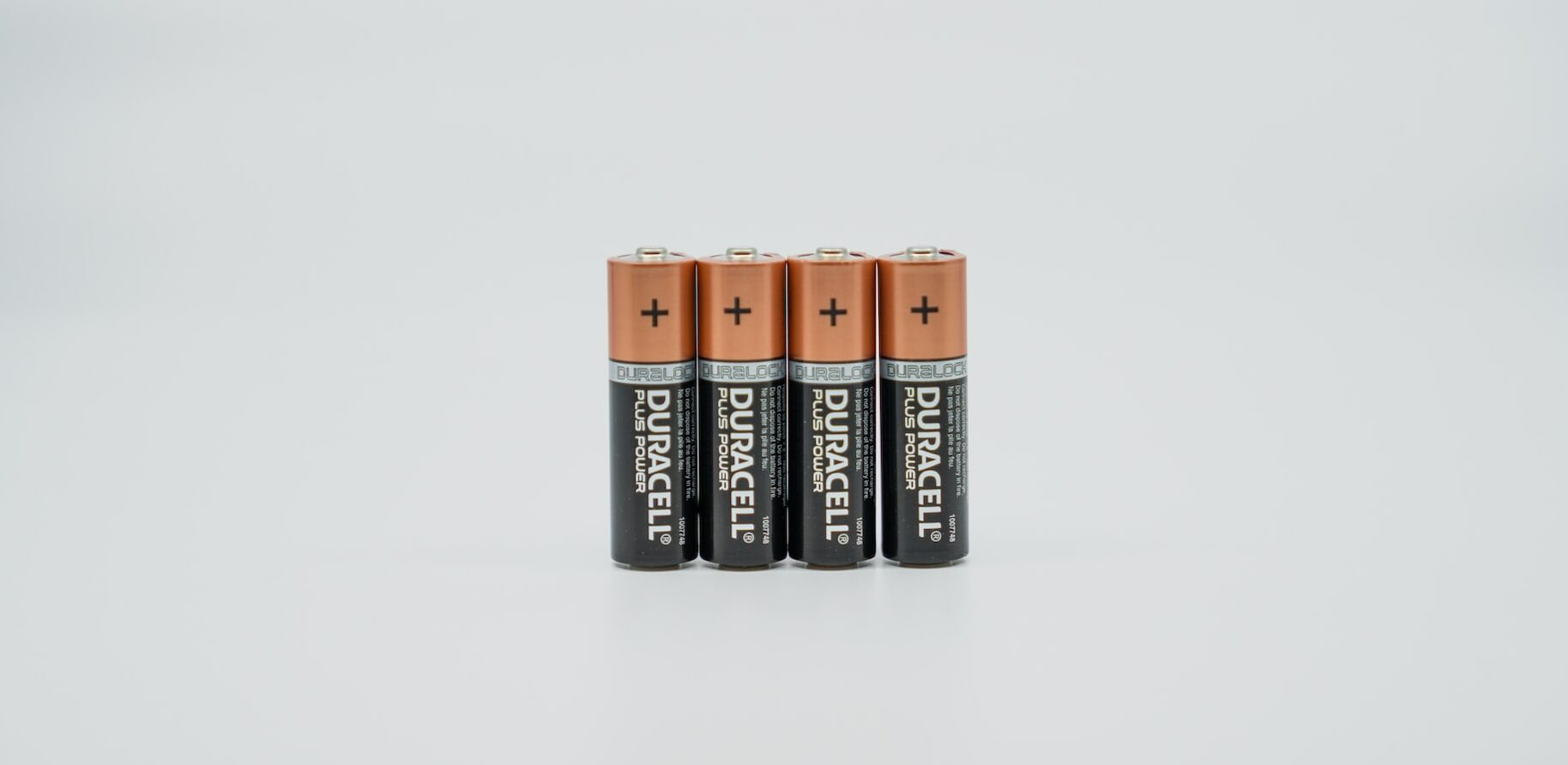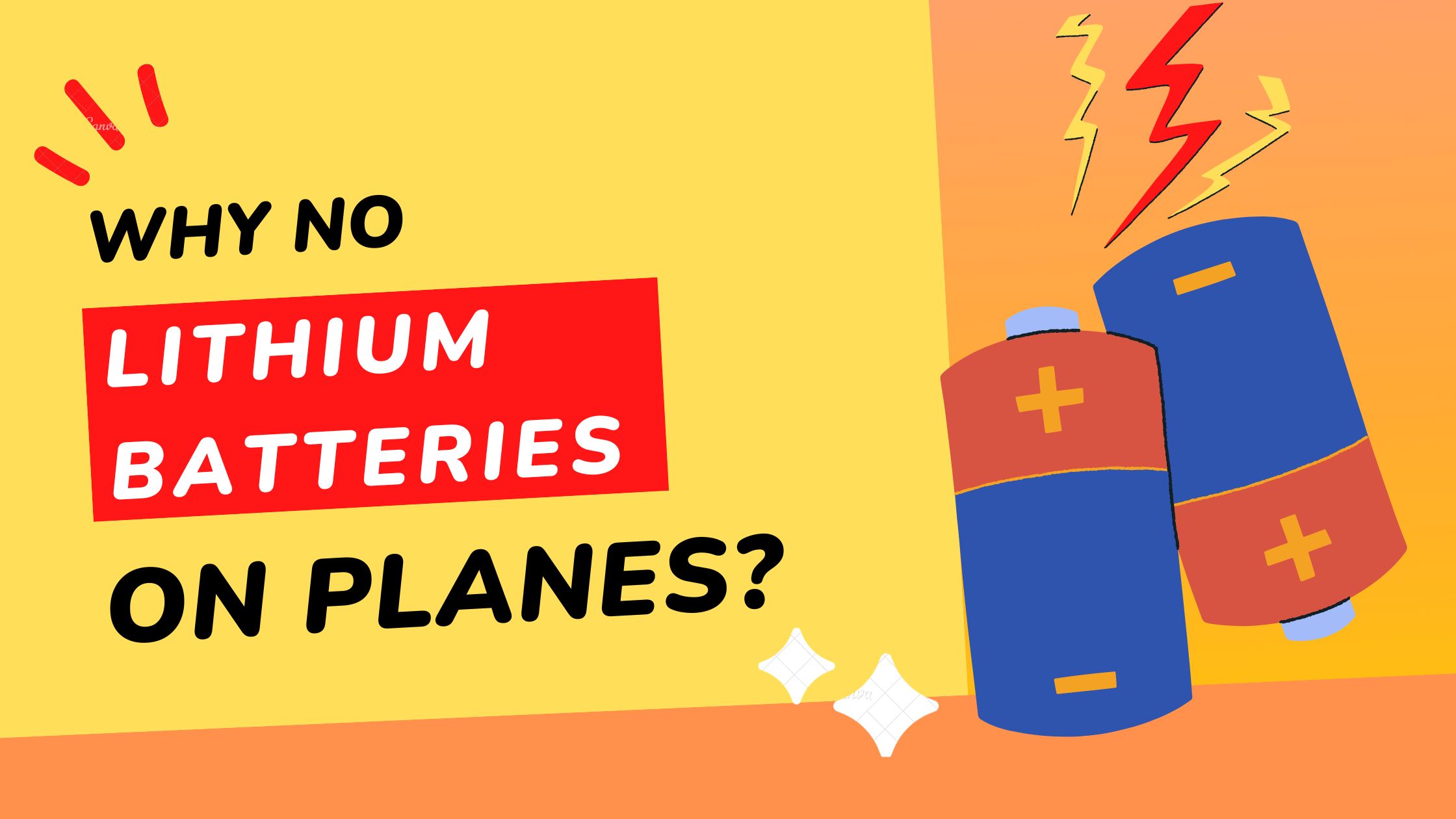You may have noticed that airlines strictly prohibit the transport of lithium batteries in checked luggage or as cargo. This has left many wondering, “Why no lithium batteries on planes?”
In this article, we will take a closer look at the reasons behind the ban on lithium batteries in air travel and explore the safety concerns that have led to these regulations.
Why No Lithium Batteries On Planes? Getting To Understand The Reasons
Lithium batteries are not allowed on airplanes because they present a fire risk. These batteries can become extremely hot when short-circuited or damaged, and if left unchecked, the heat could potentially start a fire. So in order to prevent the risk of fire, lithium batteries are not allowed on planes.
Airlines have strict policies in place to help prevent this from happening, and that’s why carrying these batteries as checked luggage is prohibited.
The good news is that there are still ways for you to travel with your devices containing lithium batteries.
The safest way to do so is by keeping them in your carry-on baggage rather than checking them into the hold of the plane.
This ensures that you can keep an eye on them at all times and reduce the risk of any damage occurring during travel.
It’s also important to take the necessary precautions when packing your lithium batteries.
Make sure that each battery is properly stored in its original packaging and that any loose terminals are covered with electrical tape or another type of insulation material.
Additionally, it’s recommended to keep all devices containing lithium batteries powered off during flight and stored away from other metal objects for added safety.
What Type Of Battery Is Not Allowed On Airplanes?

Two types of batteries are not allowed on airplanes: lithium-metal batteries and lithium-ion batteries. Lithium metal batteries are small, lightweight batteries that contain a highly flammable material known as lithium metal. Both can ignite when they come in contact with other materials and can also cause short circuits if damaged.
They have been known to cause fires onboard aircraft, which is why they’re banned from checked luggage.
Lithium-ion batteries, on the other hand, are much more common than lithium-metal batteries and can be found in everyday items like laptops, smartphones, digital cameras, power banks, and e-cigarettes.
They contain small amounts of highly volatile compounds but don’t pose the same risk of fire as lithium metal batteries.
Electronic cigarettes and vaping devices, however, are still prohibited in checked baggage due to the risk of explosions or fire that they pose.
What Size Lithium Batteries Are Not Allowed On Airplanes?
Lithium metal (non-rechargeable) batteries that weigh over two grams per battery are not allowed on airplanes. Meanwhile, lithium-ion (rechargeable) batteries with a rating over 100-watt hours (Wh) per battery are also not allowed on airplanes both in carry-on as well as checked luggage.
These limits cover the vast majority of lithium batteries used for consumer electronics.
However, there are some exceptions to these guidelines. Airlines will not allow any lithium metal or lithium-ion batteries larger than 160 watt hours (Wh).
Furthermore, devices containing a non-removable battery must be packed in carry-on baggage and the battery must be disconnected from the device itself.
Will TSA Confiscate Lithium Batteries?
When it comes to TSA confiscating your lithium batteries, the answer is no. While they may ask you to remove them from your carry-on luggage and place them in a bin for screening purposes, they are not allowed to take them away without approval from an airline representative.
Generally speaking, most airlines will allow spare lithium ion and metal batteries in both carry-on and checked baggage, but they may have limits on how many you can bring with you.
In addition to size limitations, it’s also important to note that when transporting any type of battery – regardless of the chemistry or size – it must be protected from short circuits.
This means that loose batteries must be placed in a case, pouch, or plastic bag and kept away from any metal objects (keys, coins, etc.) in your luggage.
So if you follow all of the necessary rules and regulations for transporting lithium batteries on planes, then there’s no need to worry about having them taken away by TSA at the airport.
What Are TSA Restrictions On Lithium Batteries On A Plane?

All spare lithium batteries must be placed in your carry-on luggage. This includes both non-rechargeable and rechargeable lithium batteries, and they should not exceed a rating of 100-watt hours (Wh). For batteries exceeding 100 Wh, you’ll need to ask special permission from the airline prior to boarding.
It’s also important to remember that lithium metal (non-rechargeable) batteries are limited to 2 grams of lithium per battery.
If you have devices containing these batteries, they must be placed in your carry-on bag and the devices themselves must be powered off.
It’s also important to note that if a device contains both lithium-metal and lithium-ion batteries, they must be removed from the device and each battery type must be kept separately and stored in accordance with the relevant restrictions.
How Does TSA Detect Lithium Batteries?
The answer lies in the power of X-rays! Through a process called X-ray absorption, TSA agents are able to identify lithium-ion batteries and remove them for further inspection. When X-rays pass through a piece of luggage, they create an image on the other side.
The TSA agent looks at this image and can tell if there are any suspicious items present. But unlike metal objects, the X-rays don’t bounce off of lithium-ion batteries in the same way.
Instead, they absorb the energy given off by the battery and display it as a unique pattern on the other side of the bag.
This is how TSA agents are able to pick out lithium-ion batteries from all other types of items.
But that’s not all! The X-ray absorption process also allows TSA agents to determine how many batteries are inside a bag and their overall size and shape.
This helps them identify potentially dangerous items before they can get on the plane.
In addition to X-ray absorption, the TSA also uses other techniques to detect lithium-ion batteries in luggage.
One such technique is called “density scanning,” which involves using low-level radiation to measure the density of different objects inside a bag.
Another method used is called “thermal imaging,” which involves using infrared cameras to detect heat signatures from the batteries.
What Kinds Of Batteries Does The FAA Allow In Carry-On Baggage?
The FAA has given some specific guidelines on the types of batteries that can be taken in the cabin. Here’s a quick overview: Dry cell alkaline batteries, such as AA, AAA, C, D, and 9-volt cells are all allowed in carry-on bags.
The same goes for dry cell rechargeable batteries like Nickel Metal Hydride (NiMH) and Nickel Cadmium (NiCd).
It’s important to make sure you protect your batteries from damage and short circuits. This means wrapping any exposed terminals with electrical tape or keeping them in their original packaging if possible.
It’s also important to make sure your battery-powered devices are protected from accidental activation or heat generation.
Any battery that is damaged or recalled, regardless of if it’s in a device or not, must not be taken on board the aircraft.
This includes lithium metal and lithium-ion batteries which are usually found in items such as laptops, tablets and smartphones.
What Kinds Of Batteries Does The FAA Allow In Checked Baggage?
The Federal Aviation Administration (FAA) generally allows all types of batteries in checked baggage, as long as they are protected from damage and short circuit. These batteries especially include non-spillable wet cells (flooded), non-spillable gel cells, lithium-ion, and nickel metal hydride batteries.
However, for safety reasons, spare lithium metal and lithium-ion/polymer batteries are not allowed in checked luggage – this includes external battery packs.
It’s also important to make sure that any battery-powered devices with moving parts or those that could heat up are protected from accidental activation.
It’s also important to remember that electronic cigarettes and vaporizers are prohibited in checked baggage at all times.
Any other type of device containing a battery must be removed from its carrying case, packed in a protective pouch, and carried in the cabin.
Is There A Limit To The Number Of Batteries Or Devices You Can Carry?
When it comes to batteries and devices, the main limitation of airplanes is that they must be for personal use (including professional use). Batteries and battery-powered devices carried for resale or distribution by a vendor do not qualify for these exceptions.
In terms of large lithium-ion batteries (101-160 Wh) and non-spillable batteries, there is a two-spare limit.
In addition, all spare lithium ion or lithium metal batteries must be individually protected from short circuits.
This means they should be kept in their original packaging, have tape over the terminals, or be placed in a protective pouch or case.
They must also be no larger than 160Wh each or 12g equivalent lithium content per battery.
The same rules apply to devices that use lithium-ion or lithium-metal batteries, with the additional requirement that they cannot exceed 2kg in weight.
| Battery Type | Carry-On Baggage | Checked Baggage |
| Dry Cell Batteries | Yes | Yes |
| Lithium-ion | Yes | No |
| Lithium Metal | Yes | No |
| Nickel Metal Hydride | Yes | Yes |
| Alkaline | Yes | Yes |
| Lead Acid | No | Yes |
| Nickel Cadmium | No | Yes |
How Many Batteries Can You Take On A Plane?
Travelers are allowed to bring two spare batteries per passenger on a plane, provided they receive airline approval. The batteries must be for small consumer electronics such as cameras, LED flashlights, watches, and the like, with each battery containing no more than 2 grams of lithium.

However, e-cigarettes and vaporizers are not permitted in checked baggage. It is important to note that regulations for spare batteries may vary between airlines.
Thus, it is best to check with your airline prior to travel.
Additionally, make sure that all spare batteries are placed in carry-on luggage. Never place them in checked baggage due to the risk of fire or explosion.
How Do You Pack A Lithium Ion Battery For A Flight?
It’s important to pack your batteries correctly for two reasons. First, the presence of lithium-ion batteries in checked baggage can create a fire hazard. The Department of Transportation has regulations that prohibit passengers from bringing loose or damaged batteries on flights.
Second, it’s essential to make sure your devices are safe and secure while traveling.
This way you don’t have to worry about losing valuable items during transit.
Leaving The Batteries In Their Retail Packaging
The easiest way to pack a lithium-ion battery is to simply leave it in its original retail packaging.
This will help protect the battery and keep it secure in your checked bag. However, make sure to double-check the packaging for any signs of damage or tampering before you board your flight.
Covering Battery Terminals With Tape
If you don’t have the original retail packaging, one way to protect the terminals is by covering them with electrical tape.
This will help prevent short circuits and reduce the risk of fire while in transit. Make sure that all exposed metal parts are covered so there’s no chance of a spark or shock during flight.
Using A Battery Case Or Sleeve In A Camera Bag:
For larger items like cameras or drones, it’s best to use a protective battery case or sleeve that fits snugly in a camera bag. This will help keep the battery secure and protected from any bumps or jostles during transit.
Putting Them Snugly In A Plastic Bag Or Protective Pouch:
If you don’t have a case or sleeve, you can also put your batteries in a plastic bag or protective pouch before packing them.
Make sure they fit snugly so they won’t move around too much during the flight. Again, double-check for any signs of damage before boarding.
Conclusion
In conclusion, while lithium batteries have become an indispensable part of our lives, their transportation on commercial flights is strictly regulated due to the potential safety risks they pose.
From overheating and fires to explosions, the dangers of these batteries cannot be ignored. Airlines have put strict regulations in place to prevent the transportation of large quantities of lithium batteries on planes. Besides there are very few exceptions to these regulations.
All in all, is important to be aware of these regulations. Make sure you follow them to ensure the safety of all passengers and crew.







